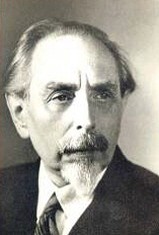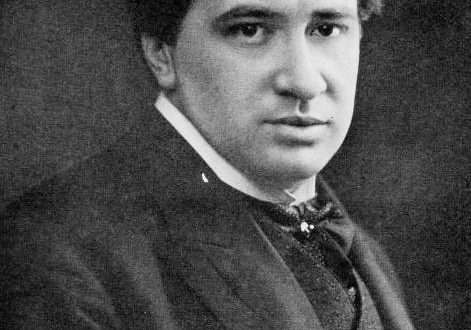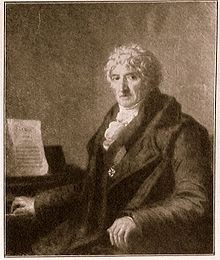
Samuil Feinberg |
Samuel Feinberg

Aesthetic impressions from a read book, heard music, seen a picture can always be renewed. The material itself is usually at your disposal. But the specific impressions of performing revelations are gradually, over time, fading in our memory. And yet, the most vivid meetings with outstanding masters, and most importantly, original interpreters, for a long time cut into the spiritual consciousness of a person. Such impressions certainly include encounters with Feinberg’s pianistic art. His concepts, his interpretations did not fit into any framework, into any canons; he heard the music in his own way – every phrase, in his own way he perceived the form of the work, its whole structure. This can be seen even today by comparing Feinberg’s recordings with the playing of other major musicians.
The concert activity of the artist lasted more than forty years. Muscovites listened to him for the last time in 1956. And Feinberg declared himself a large-scale artist already at the end of the Moscow Conservatory (1911). A student of A. B. Goldenweiser brought to the attention of the examination committee, in addition to the main program (Prelude, chorale and fugue of Franck, Rachmaninoff’s Third Concerto and other works), all 48 preludes and fugues of Bach’s Well-Tempered Clavier.
Since then, Feinberg has given hundreds of concerts. But among them, a performance at the forest school in Sokolniki occupies a special place. It happened in 1919. V. I. Lenin came to visit the guys. At his request, Feinberg then played Chopin’s Prelude in D flat major. The pianist recalled: “Everyone who had the pleasure of taking part in a small concert to the best of their ability could not help but be conveyed by the amazing and radiant love of life of Vladimir Ilyich … I played with that inner enthusiasm, well known to every musician, when you seem to physically feel that every sound finds kind, sympathetic response from the audience.
A musician of the broadest outlook and great culture, Feinberg paid considerable attention to composition. Among his compositions are three concertos and twelve sonatas for piano, vocal miniatures based on poems by Pushkin, Lermontov, Blok. Of considerable artistic value are Feinberg’s transcriptions, primarily of Bach’s works, which are included in the repertoire of many concert pianists. He devoted a lot of energy to pedagogy, being a professor at the Moscow Conservatory since 1922. (In 1940 he was awarded the degree of Doctor of Arts). Among his students were concert artists and teachers I. Aptekarev, N. Emelyanova, V. Merzhanov, V. Petrovskaya, L. Zyuzin, Z. Ignatieva, V. Natanson, A. Sobolev, M. Yeshchenko, L. Roshchina and others . Nevertheless, he entered the history of Soviet musical art, first of all, as an outstanding master of piano performance.
Emotional and intellectual beginnings were somehow firmly intertwined in his musical worldview. Professor V. A. Natanson, a student of Feinberg, emphasizes: “An intuitive artist, he attached great importance to the direct, emotional perception of music. He had a negative attitude towards any deliberate “directing” and interpretation, to far-fetched nuances. He completely merged intuition and intelligence. Such performance components as dynamics, agogics, articulation, sound production have always been stylistically justified. Even such erased words as “reading the text” became meaningful: he “saw” the music surprisingly deeply. Sometimes it seemed that he was cramped within the framework of one work. His artistic intellect gravitated towards broad stylistic generalizations.
From the latter point of view, his repertoire, which was composed of massive layers, is characteristic. One of the largest is the music of Bach: 48 preludes and fugues, as well as most of the original compositions of the great composer. “His performance of Bach,” Feinberg’s students wrote in 1960, “deserves special study. Working all his creative life on Bach’s polyphony, Feinberg as a performer achieved such high results in this area, the significance of which, perhaps, has not been fully disclosed. In his performance, Feinberg never “shrinks” the form, does not “admire” the details. Its interpretation proceeds from the general meaning of the work. He has the art of molding. The pianist’s subtle, flighty phrasing creates, as it were, a graphic drawing. Connecting some episodes, highlighting others, emphasizing the plasticity of musical speech, he achieves an amazing integrity of performance.
The “cyclical” approach defines Feinberg’s attitude towards Beethoven and Scriabin. One of the memorable episodes of Moscow’s concert life is the pianist’s performance of thirty-two Beethoven sonatas. Back in 1925 he played all ten of Scriabin’s sonatas. In fact, he also globally mastered the main works of Chopin, Schumann and other authors. And for each composer he performed, he was able to find a special angle of view, sometimes going against the generally accepted tradition. In this sense, the observation of A. B. Goldenweiser is indicative: “It is not always possible to agree with everything in Feinberg’s interpretation: his tendency to dizzyingly fast paces, the originality of his caesuras – all this is sometimes debatable; however, the exceptional mastery of the pianist, his peculiar individuality, and pronounced strong-willed beginning make the performance convincing and involuntarily captivate even the dissident listener.”
Feinberg enthusiastically played the music of his contemporaries. So, he introduced listeners to interesting novelties by N. Myaskovsky, A.N. Alexandrov, for the first time in the USSR he performed the Third Piano Concerto by S. Prokofiev; Naturally, he was an excellent interpreter of his own compositions as well. The originality of figurative thinking inherent in Feinberg did not betray the artist in the interpretation of modern opuses. And Feinberg’s pianism itself was marked by special qualities. Professor A. A. Nikolaev drew attention to this: “The techniques of Feinberg’s pianistic skill are also peculiar – the movements of his fingers, never striking, and as if caressing the keys, the transparent and sometimes velvety tone of the instrument, the contrast of sounds, the elegance of the rhythmic pattern.”
… Once a pianist remarked: “I think that a real artist is primarily characterized by a special refractive index, which he is capable of, creating a sound image.” Feinberg’s coefficient was enormous.
Lit. cit.: Pianism as an art. – M., 1969; Mastery of the pianist. – M., 1978.
Lit .: S. E. Feinberg. Pianist. Composer. Researcher. – M., 1984.
L. Grigoriev, J. Platek





